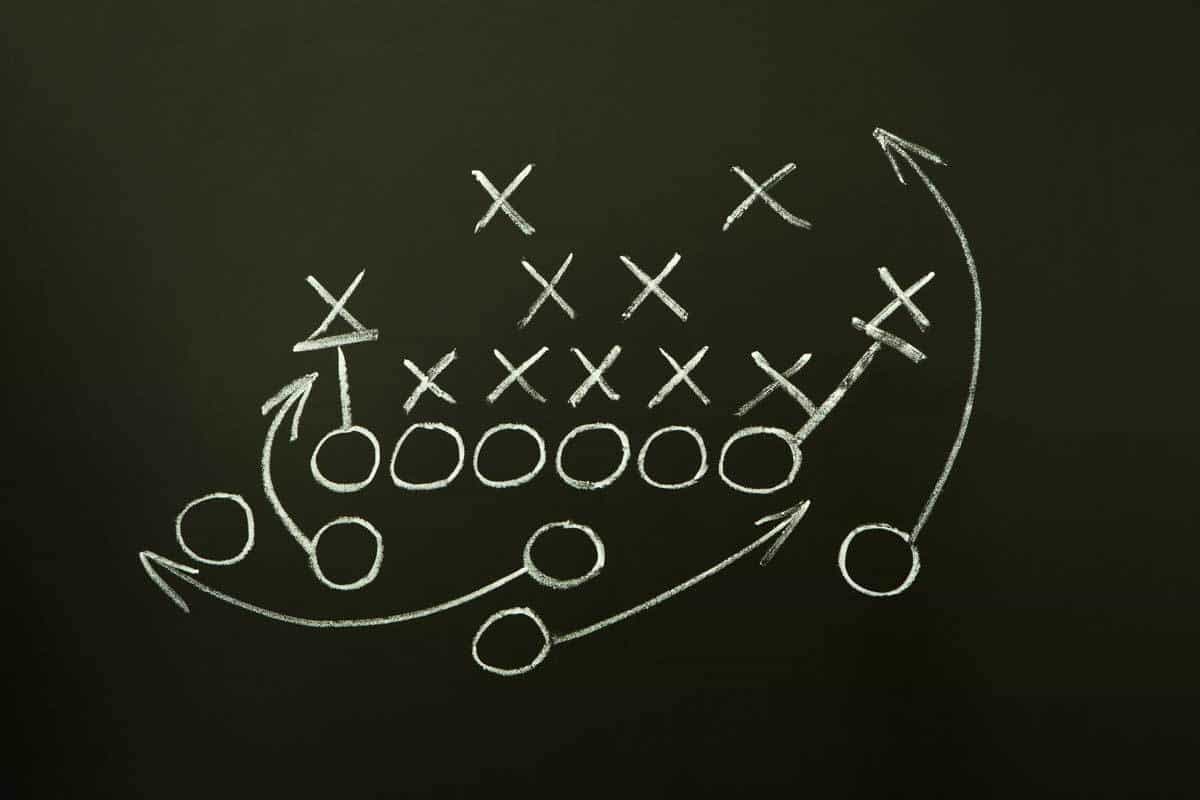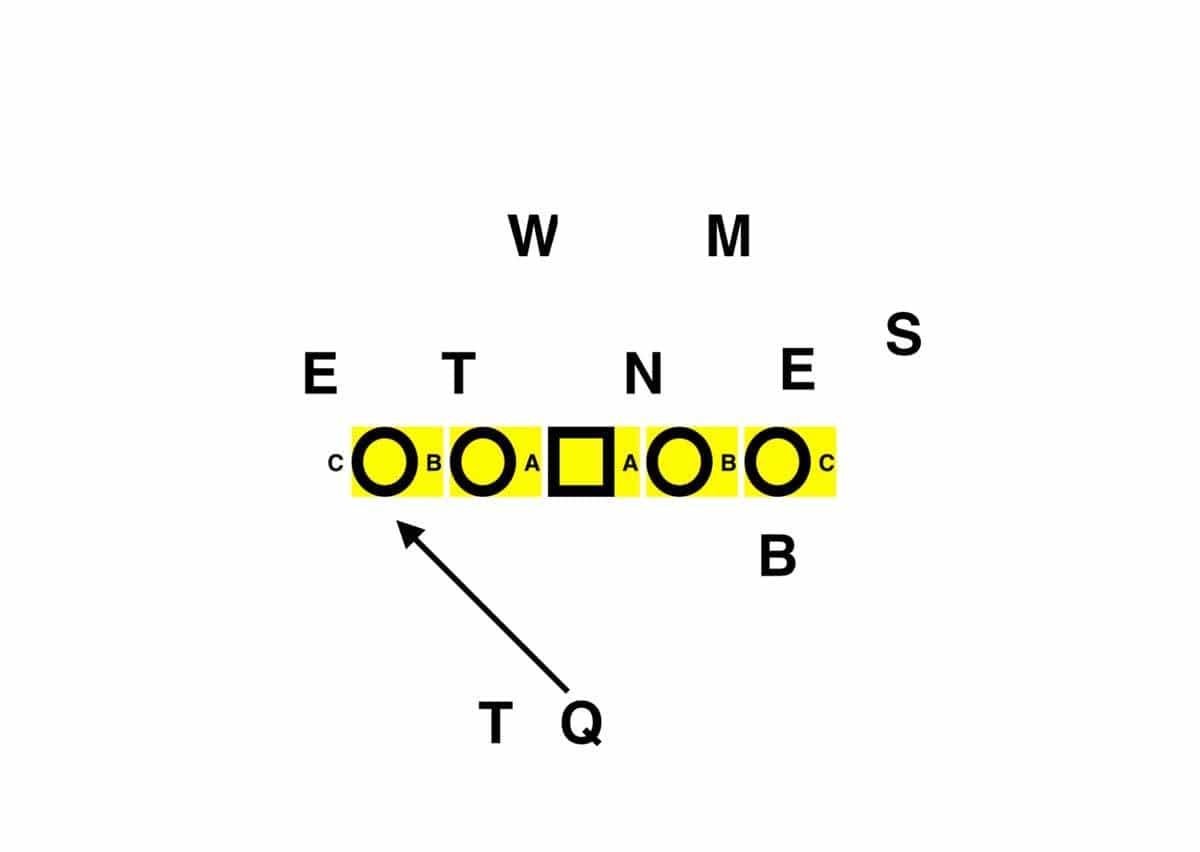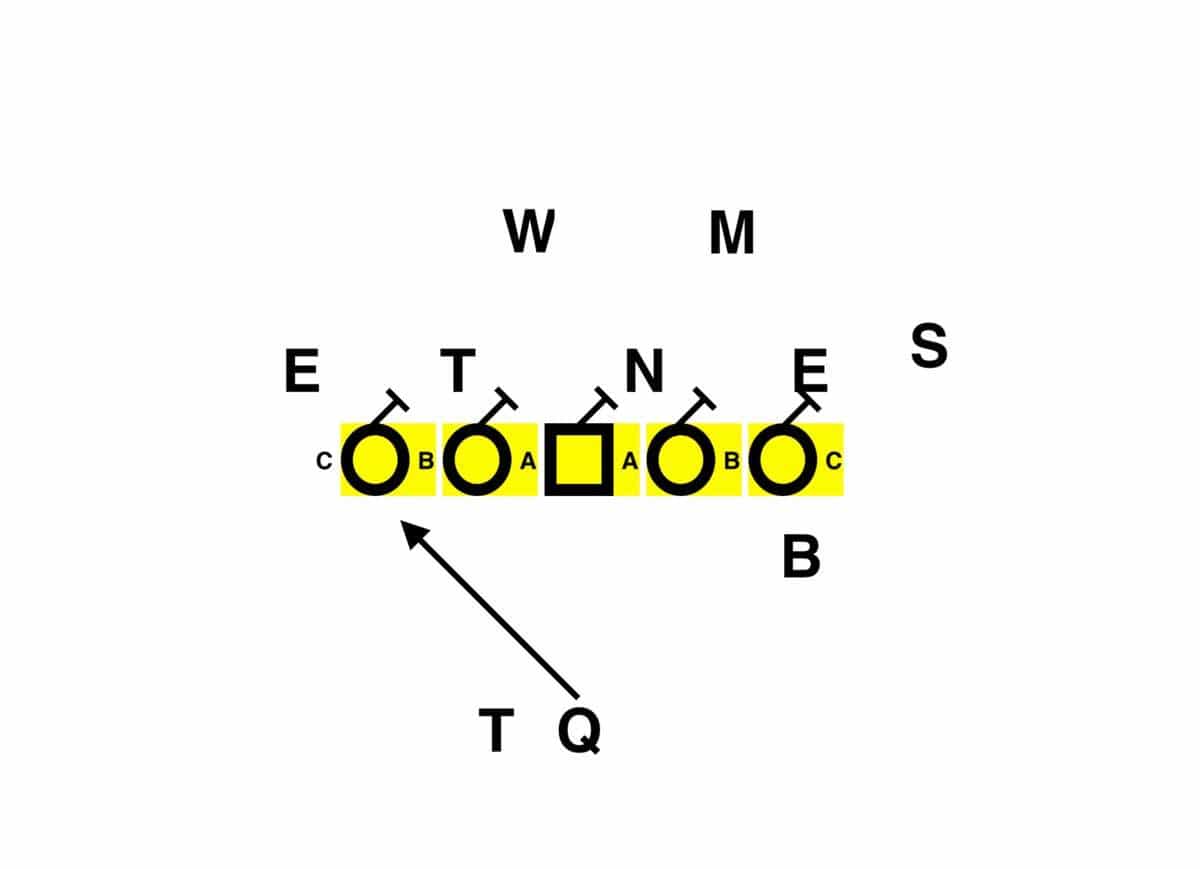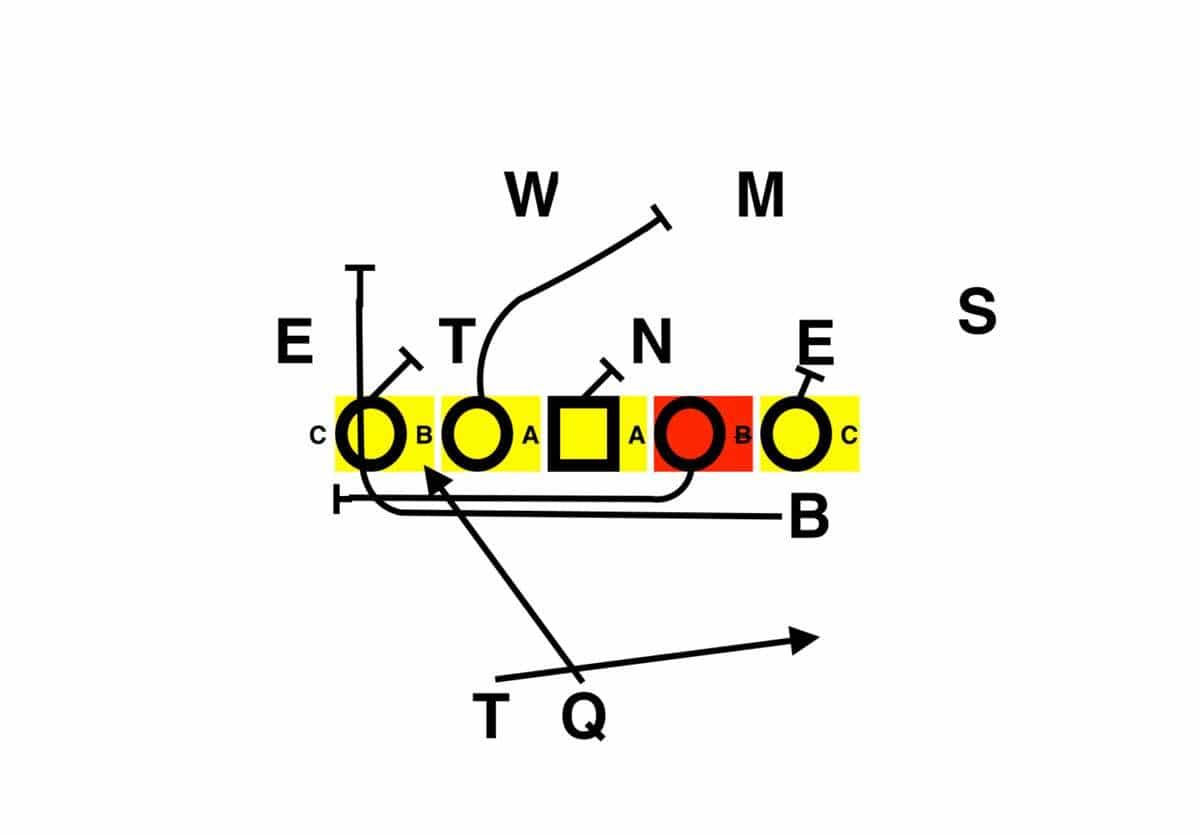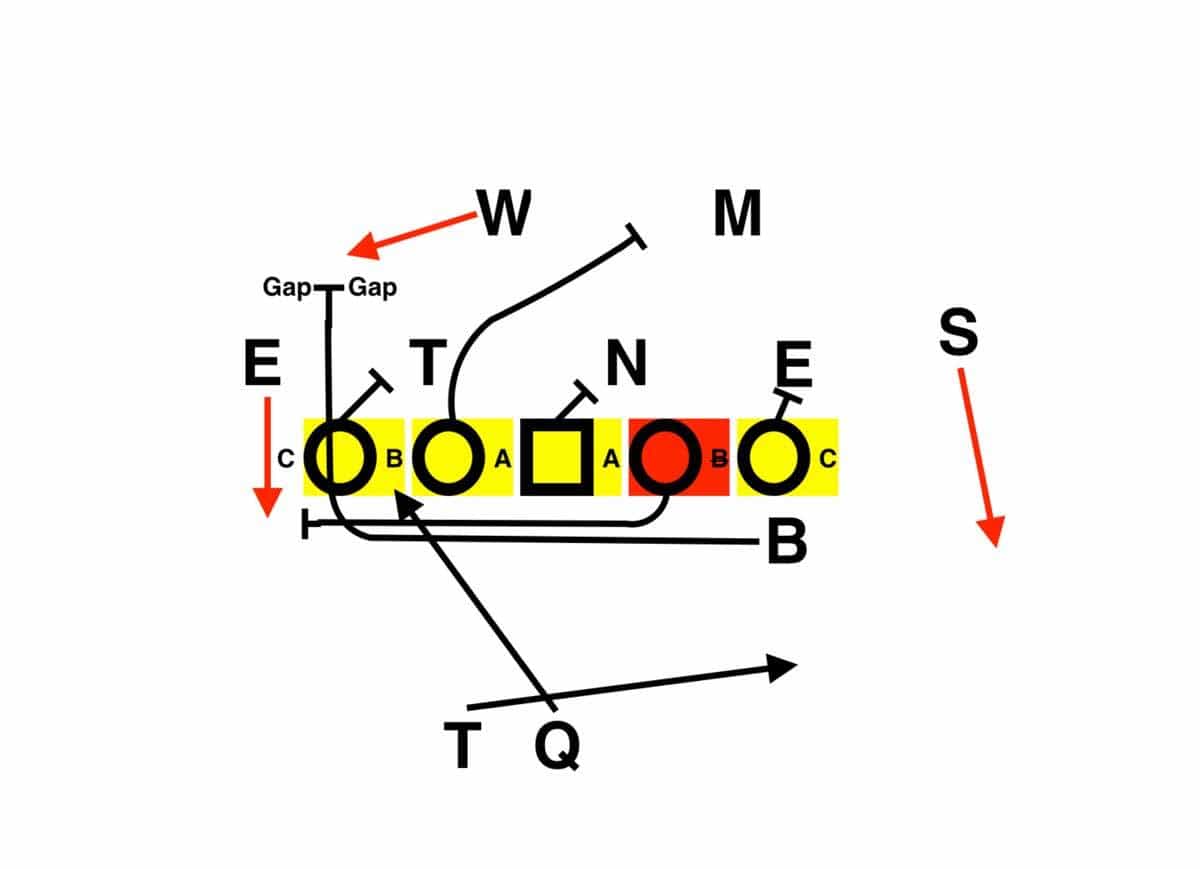In my last column, we covered how the Gators’ offense will be making the transition this fall from being primarily a power/counter team to being an inside zone team. Indeed, inside zone will be the play and the run scheme you’ll see most often from the Gators this year, but it won’t be the only scheme. Similar to Urban Meyer’s spread option teams, Kurt Roper incorporates a healthy dose of gap scheme runs into his offenses. Gap scheme runs include things like the aforementioned Power O and Counter Trey runs, but also things like the veer and inverted veer/QB dash, speed option, and various traps.
While most of these plays are traditionally 2-back run plays that feature at the least a fullback and often an in-line tight end, teams with mobile quarterbacks have begun to adapt them to the spread by incorporating H-backs and using the quarterback in one of the roles that traditionally goes to a running back.
Whereas zone runs are versatile play that will flow in the direction the run is designed to go and allow the runner to read his blocks, make a cut, and get upfield. Gap runs are all about assigning the runner a gap to hit, walling off the defense behind the gap, kicking out the defense in front of the gap, and putting multiple blockers at the point of attack. In short, you use your line
In Roper’s gap scheme, you’ll primarily see gap schemes that have the runner target the playside C-gap by aiming at the playside tackle. What then happens is everyone on the playside will block down, and the backside will either block down or pull to the playside to kick out or lead for the runner. The basic theory behind gap schemes looks something like this:
Now, lay in the base down blocks and what you’ll see is that you’ve created favorable angles on the nose, 3-technique and the strongside end, starting to move towards creating that wall on the backside of the play.
For the most part, we’ve accounted for the down linemen. The nose is taken out by a down block from the center, the strong side end is taken out by a down block from the playside tackle, and the 3-technique defensive tackle should be taken out by a down block from the left tackle. That leaves 4 players unaccounted for and 2 linemen, the B-back, and the tailback without an assignment yet, so let’s lay them in:
What you’ll see is that by pulling the backside guard to kick out the end, you actually get rid and close down the backside B-gap with the center blocking down on the nose. The playside guard will actually double team the 3-technique tackle with the playside tackle, and the pair will work up to the second level and wall off the first backside linebacker (in this case the Mike). The B-back will pull around also and lead through the hole off the outside hip of the left tackle, taking on the first playside linebacker (Will). The quarterback will follow, read the block, and go the opposite way. The Sam linebacker is accounted for by the fake to the tailback. In fact, this can even be done as a read play with the quarterback handing off should the Sam pinch down and take the quarterback.
What you end up with is a double team at the point of attack, a wall on the backside, favorable angles everywhere else, and a Will linebacker that has two gaps to cover. You can run this same type of scheme pulling the backside guard and tackle, pulling the center, or as is the case in the veer/dash, not pulling anyone. The only difference is who gets the ball, the aiming point of the runner, and who you tag to pull and either kick out or lead and ream in the play call or at the line. In Roper’s case, he likes to run power in short yardage pulling either the backside guard and tackle or the guard and B-back as shown above, or a variation on the veer/dash for packaged plays by lining up the B-back playside and pulling the backside guard.
If you’re watching from the stands or on TV, the way you can tell these runs apart from zone runs is by the direction the line and runner take. If you see the line moving the opposite direction from the runner’s aiming point and someone pulling across with the direction of the run, you’re looking at a gap run. If you see the line moving the same direction as the runner’s aiming point and double teaming up on the playside, you’re seeing a zone run.
The downside is that these types of runs are more susceptible to stunts and games across the line, particularly if the pulling linemen/B-backs are disrupted by the nose guard pushing the center backwards or if they can’t make their blocks on generally quicker and more athletic linebackers and defensive ends or can’t recognize who to block because the run fit has changed due to a stunt. Thus, I think that with todays defenses, you have to be really careful on offense as to when you are using gap runs. When they work, they can be devastating, but when they don’t, you generally lose yardage.
Personally, I’m a fan of how I’ve seen Roper use them on film. Short yardage and early down counts where you’re less likely to see run blitzes and stunts are a great start. Additionally, using them as part of read plays in both the running and passing game to give the quarterback multiple options in the event the post-snap look isn’t favorable for the called run greatly mitigates the inherent dangers in gap scheme runs. I’m looking forward to seeing Kurt Roper continue to use them creatively to put defenses in binds, just like the packaged QB Dash/4 verticals play below.


